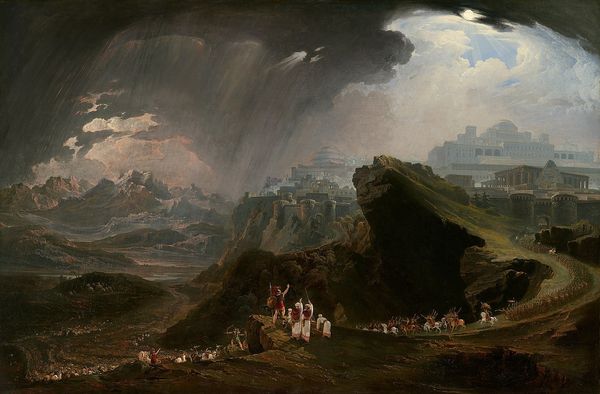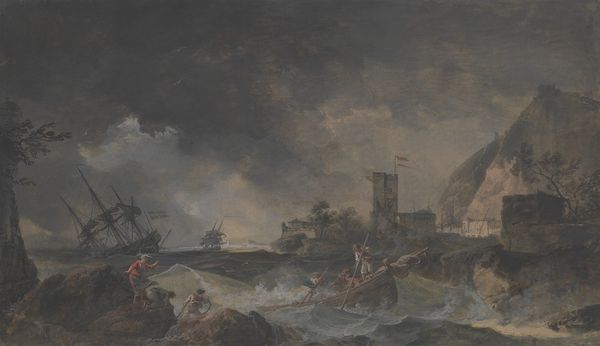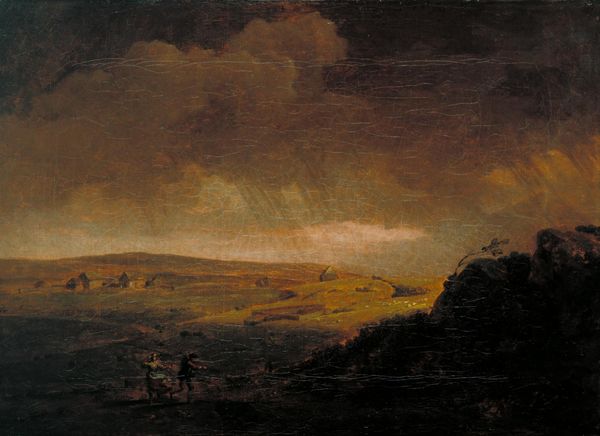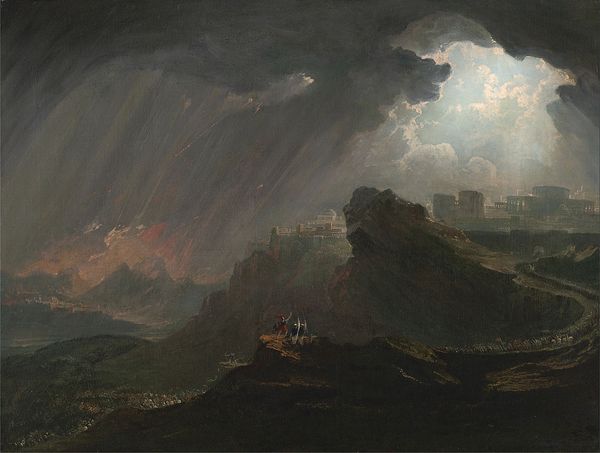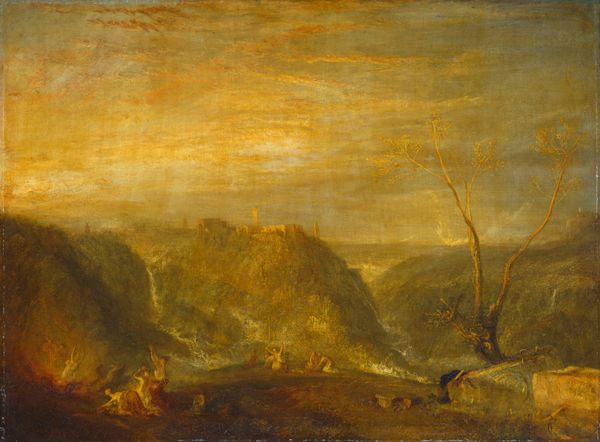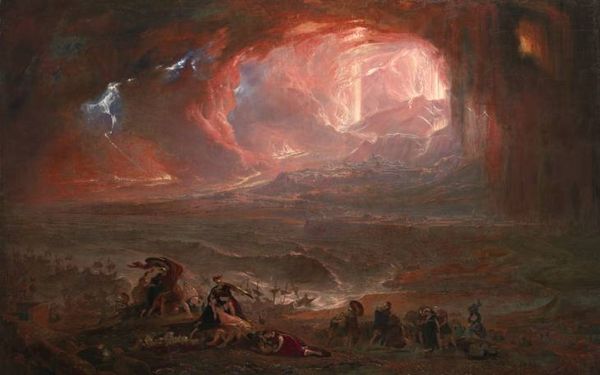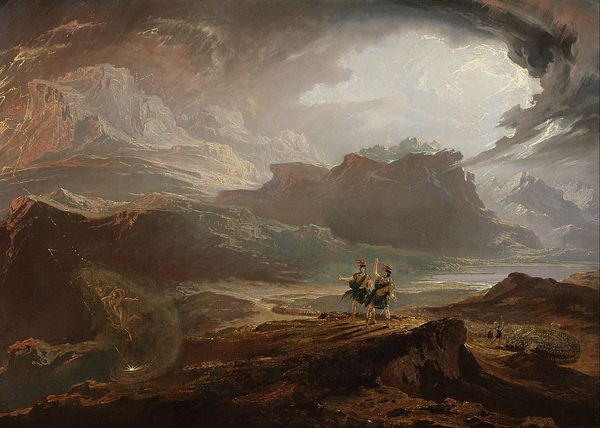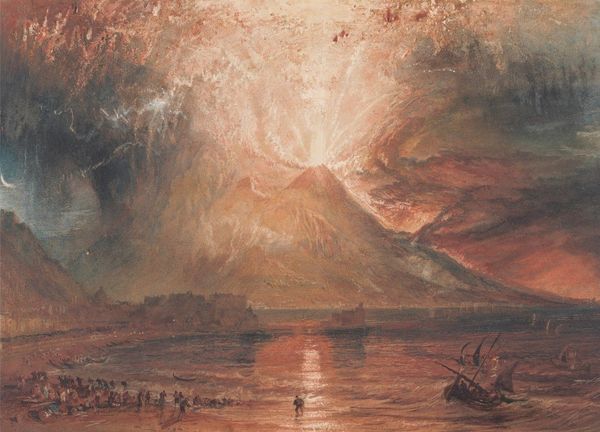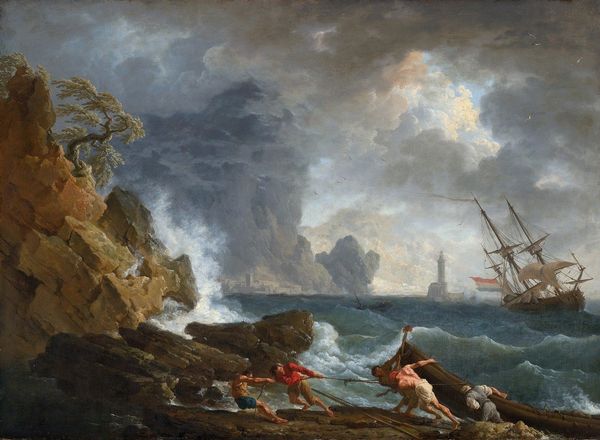
painting, oil-paint
#
allegory
#
painting
#
oil-paint
#
landscape
#
ancient-egyptian-art
#
oil painting
#
romanticism
#
history-painting
Copyright: Public Domain: Artvee
Curator: Here we have J.M.W. Turner’s “The Fifth Plague of Egypt,” an oil painting created around 1800. What’s your immediate take on it? Editor: It's oppressive. That churning sky practically smothers everything below. The colors are so heavy. Curator: Indeed. Turner’s piece captures the biblical plague where livestock was decimated, a divine punishment unleashed upon the Egyptians. What stands out to me is how he renders the immense scale of the disaster, placing the majestic pyramids and architecture almost as tiny bystanders in this apocalyptic scene. It feels, in its own way, a kind of commentary on power and transience. Editor: I see your point, the small scale is jarring. It's less about individual suffering, and more a record of nature as an indifferent brute force grinding everything underneath it. Given that this is oil paint, I can imagine he was really getting stuck in with building up layers, trying to find a method to represent this chaotic event. I wonder about the economic circumstances of making something this size, how he justified this amount of paint? Curator: That is a valid question! Think about what it takes to get pigments like these. Ultramarine, for instance, coming all the way from lapis lazuli. I think he probably justifies it on the basis of allegory - looking to the Bible gives the art 'high' purpose, and yet you're also seeing a painting of an unstable, tumultuous event of nature and destruction. Is he undermining the source text or augmenting it? Editor: Perhaps it's less a biblical commentary, more a visual catalogue of ruin. An encyclopedic entry of a sublime event where architecture, livestock, weather and even pigment, find themselves equally undone by their composite parts. Is there anything particularly innovative about how he lays down paint here? I wonder how the underpainting is working in relation to these thick daubs and smears on top. Curator: His innovative spirit certainly shines through here. You have to remember, the classical conventions favored smoother finishes. Turner, on the other hand, embraces texture, allowing the materiality of the paint itself to convey the emotional turmoil of the scene. The use of impasto in the sky really emphasizes that sense of roiling chaos and movement. It pulls you in - very smart. Editor: Seeing how a painter plays with expectation and material always elevates my appreciation. So, "The Fifth Plague of Egypt" – not just a history painting, but a masterclass in using oil paint to show destruction itself as the ultimate material force.
Comments
No comments
Be the first to comment and join the conversation on the ultimate creative platform.
